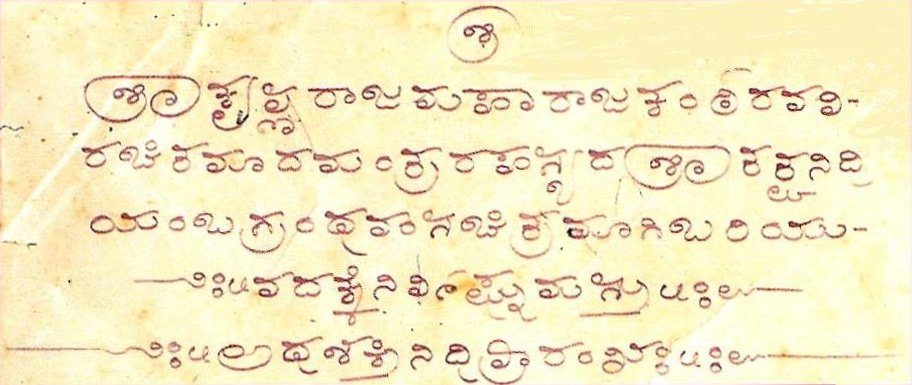|
Dvi Pada Sirsasana
Yoganidrasana, ( sa, योगनिद्रासन) or Yogic Sleep Pose is a reclining forward-bending asana in modern yoga as exercise. It is sometimes called Supta Garbhasana (Reclining Embryo Pose). The name Dvi Pada Sirsasana is given to the balancing form of the pose. In hatha yoga, the pose was used in Pasini Mudra, the noose mudra, a seal to prevent the escape of prana; it was not an asana. Etymology and origins as a mudra The name of this pose comes from योग ''yoga'' meaning "uniting", निद्र ''nidra'' meaning "sleep", and आसन ''āsana'' meaning "posture" or "seat". The asana's name derives from the yogic sleep mentioned in the Hindu epic ''Mahabharata'': Yoganidrasana is described in the 17th century '' Haṭha Ratnāvalī'' 3.70. The pose is illustrated in an 18th century painting of the eight yoga chakras in Mysore. It is illustrated as "Pasini Mudra" (not an asana) in Theos Bernard's 1943 book '' Hatha Yoga: The Report of A Personal ... [...More Info...] [...Related Items...] OR: [Wikipedia] [Google] [Baidu] |
Gheranda Samhita
''Gheranda Samhita'' (IAST: gheraṇḍasaṁhitā, घेरंडसंहिता, meaning “Gheranda's collection”) is a Sanskrit text of Yoga in Hinduism. It is one of the three classic texts of hatha yoga (the other two being the ''Hatha Yoga Pradipika'' and the ''Shiva Samhita''), and one of the most encyclopedic treatises in yoga.B. Heimann (1937)Review: The Ǧheraṇda Saṁhitā. A Treatise on Haṭha Yoga by Śrīś Chandra Vasu The Journal of the Royal Asiatic Society of Great Britain and Ireland, Cambridge University Press, No. 2 (Apr., 1937), pp. 355-357 Fourteen manuscripts of the text are known, which were discovered in a region stretching from Bengal to Rajasthan. The first critical edition was published in 1933 by Adyar Library, and the second critical edition was published in 1978 by Digambarji and Ghote. Some of the Sanskrit manuscripts contain ungrammatical and incoherent verses, and some cite older Sanskrit texts. It is likely a late 17th-century text, ... [...More Info...] [...Related Items...] OR: [Wikipedia] [Google] [Baidu] |
Garbha Pindasana
Garbha Pindasana ( sa , ङर्भ Pइण्डआसन, IAST: ''Garbha Piṇḍāsana''), Embryo in Womb Pose, sometimes shortened to Garbhasana, is a seated balancing asana in hatha yoga and modern yoga as exercise. The pose is identical to Uttana Kurmasana, the inverted tortoise pose, except that the body is on the back in that pose instead of balancing upright. Etymology and origins The name comes from the Sanskrit words ''garbha'' meaning "womb"; ''piṇḍa'', meaning "embryo" or "foetus"; and ''āsana'' (आसन) meaning "posture" or "seat". The pose is described in the 17th century '' Bahr al-Hayāt''. revised from American Academy of Religions conference, San Francisco, 19 November 2011. The limb positions of Garbha Pindasana are identical to those in Uttana Kurmasana, which is illustrated in the 19th century ''Sritattvanidhi''. Description The legs are crossed in Padmasana; practitioners who cannot easily keep the feet in Padmasana may cross the le ... [...More Info...] [...Related Items...] OR: [Wikipedia] [Google] [Baidu] |
Barbara Henning
Barbara Henning (born October 26, 1948) is an American poet and fiction writer. She is the author of eight books of poetry, four novels and a series of photo-poem pamphlets. Her recent novelized biography of her mother, ''Ferne, a Detroit Story,'' was named by the Library of Michigan as a Notable Book of 2023. She is also the editor of a collection of interviews, 'Looking Up Harryette Mullen: Sleeping with the Dictionary and Other Works''and ''The Selected Prose of Bobbie Louise Hawkins''. Her work has been published in numerous journals. Some recent books of poetry and prose are ''Digigram'' (United Artists Books 2020); a novel, ''Just Like That'' (Spuyten Duyvil 2018); and a conceptual project, a collection of sonnets composed from 999 passages from 999 books in her collection, entitled ''My Autobiography'' (United Artists Books, 2007). ''Prompt Book: Experiments in Poetry and Fiction'' is forthcoming from Spuyten Duyvil 2020). ''Poets on the Road, a Blog,'' soon to be rele ... [...More Info...] [...Related Items...] OR: [Wikipedia] [Google] [Baidu] |
Sritattvanidhi
The ''Sritattvanidhi'' (, "The Illustrious Treasure of Realities") is a treatise written in the 19th century in Karnataka on the iconography and iconometry of divine figures in South India. One of its sections includes instructions for, and illustrations of, 122 hatha yoga postures. Authorship The ''Sritattvanidhi'' is attributed to the then Maharaja of Mysore, Krishnaraja Wodeyar III (b. 1794 - d. 1868). The Maharaja was a great patron of art and learning, and was himself a scholar and writer. Around 50 works are ascribed to him. The first page of the ''Sritattvanidhi'' attributes authorship of the work to the Maharaja himself: {{quote, ''May the work Sri Tattvanidi, which is illustrated and contains secrets of mantras and which is authored by King Sri Krishna Raja Kamteerava, be written without any obstacle. Beginning of Shaktinidhi.''{{sfn, Wodeyar, 1997, loc=Shakti nidhi Martin-Dubost's review of the history of this work says that the Maharaja funded an effort to put tog ... [...More Info...] [...Related Items...] OR: [Wikipedia] [Google] [Baidu] |
Janusirsasana
Pashchimottanasana ( sa, पश्चिमोत्तानासन, translit=paścimottānāsana), Seated Forward Bend, or Intense Dorsal Stretch is a seated forward-bending asana in hatha yoga and modern yoga as exercise. Janusirsasana is a variant with one knee bent out to the side; Upavishthakonasana has the legs straight and wide apart. Etymology and origins The name Paschimottanasana comes from the Sanskrit words ''paschima'' (पश्चिम, paścima) meaning "west" or "the back of the body"; ''uttana'' (उत्तान, uttāna) meaning "intense stretch" or "straight" or "extended"; and ''asana'' (आसन, āsana) meaning "posture" or "seat". The pose is described in the 15th-century '' Hatha Yoga Pradipika'', chapter 1, verses 28-29. The name Dandasana ( sa, दण्डासन; IAST: ''daṇḍāsana'') is from Sanskrit दण्ड ''daṇḍa'' meaning "stick" or "staff". The pose is not found in the medieval hatha yoga texts. The 19th century ''S ... [...More Info...] [...Related Items...] OR: [Wikipedia] [Google] [Baidu] |
Vishnudevananda Saraswati
Vishnudevananda Saraswati (31 December 1927 – 9 November 1993) was an Indian yoga guru known for his teaching of asanas, a disciple of Sivananda Saraswati, and founder of the International Sivananda Yoga Vedanta Centres and Ashrams. He established the Sivananda Yoga Teachers' Training Course, possibly the first yoga teacher training programs in the West. His books '' The Complete Illustrated Book of Yoga'' (1960) and ''Meditation and Mantras'' (1978) established him as an authority on Hatha and Raja yoga. Vishnudevananda was a peace activist who rode in several "peace flights" over places of conflict, including the Berlin Wall prior to German reunification. In 2007, his long-serving assistant, Julie Salter, reported sexual abuse against her by the guru; she published details of her experiences in 2019, leading at least 14 other women to report their experiences of similar abuse by Vishnudevananda. Early life and training Vishnudevananda was born Kuttan Nair in Keral ... [...More Info...] [...Related Items...] OR: [Wikipedia] [Google] [Baidu] |
Sirsasana
Shirshasana (Sanskrit: शीर्षासन, IAST: śīrṣāsana) Salamba Shirshasana, or Yoga Headstand is an inverted asana in modern yoga as exercise; it was described as both an asana and a mudra in classical hatha yoga, under different names. It has been called the king of all asanas. Its many variations can be combined into Mandalasana, in which the legs are progressively swept from one variation to the next in a full circle around the body. Etymology and origins The name Salamba Shirshasana comes from the Sanskrit words सालम्ब ''Sālamba'' meaning "supported", शीर्ष, ''Śīrṣa'' meaning "head", and आसन, ''Āsana'' meaning "posture" or "seat". The name ''Śīrṣāsana'' is relatively recent; the pose itself is much older, but had other names and purposes. Like other inversions, it was practised as Viparita Karani, described as a mudra in the 15th century ''Hatha Yoga Pradipika'' and other classical texts on haṭha yoga. Viparita Karani, ... [...More Info...] [...Related Items...] OR: [Wikipedia] [Google] [Baidu] |
Sanskrit
Sanskrit (; attributively , ; nominally , , ) is a classical language belonging to the Indo-Aryan branch of the Indo-European languages. It arose in South Asia after its predecessor languages had diffused there from the northwest in the late Bronze Age. Sanskrit is the sacred language of Hinduism, the language of classical Hindu philosophy, and of historical texts of Buddhism and Jainism. It was a link language in ancient and medieval South Asia, and upon transmission of Hindu and Buddhist culture to Southeast Asia, East Asia and Central Asia in the early medieval era, it became a language of religion and high culture, and of the political elites in some of these regions. As a result, Sanskrit had a lasting impact on the languages of South Asia, Southeast Asia and East Asia, especially in their formal and learned vocabularies. Sanskrit generally connotes several Old Indo-Aryan language varieties. The most archaic of these is the Vedic Sanskrit found in the Rig Veda, a colle ... [...More Info...] [...Related Items...] OR: [Wikipedia] [Google] [Baidu] |
Leon Eka Pada Sirsasana
Leon, Léon (French) or León (Spanish) may refer to: Places Europe * León, Spain, capital city of the Province of León * Province of León, Spain * Kingdom of León, an independent state in the Iberian Peninsula from 910 to 1230 and again from 1296 to 1301 * León (historical region), composed of the Spanish provinces León, Salamanca, and Zamora * Viscounty of Léon, a feudal state in France during the 11th to 13th centuries * Saint-Pol-de-Léon, a commune in Brittany, France * Léon, Landes, a commune in Aquitaine, France * Isla de León, a Spanish island * Leon (Souda Bay), an islet in Souda Bay, Chania, on the island of Crete North America * León, Guanajuato, Mexico, a large city * Leon, California, United States, a ghost town * Leon, Iowa, United States * Leon, Kansas, United States * Leon, New York, United States * Leon, Oklahoma, United States * Leon, Virginia, United States * Leon, West Virginia, United States * Leon, Wisconsin (other), United States, several ... [...More Info...] [...Related Items...] OR: [Wikipedia] [Google] [Baidu] |


.jpg)



.jpg)
